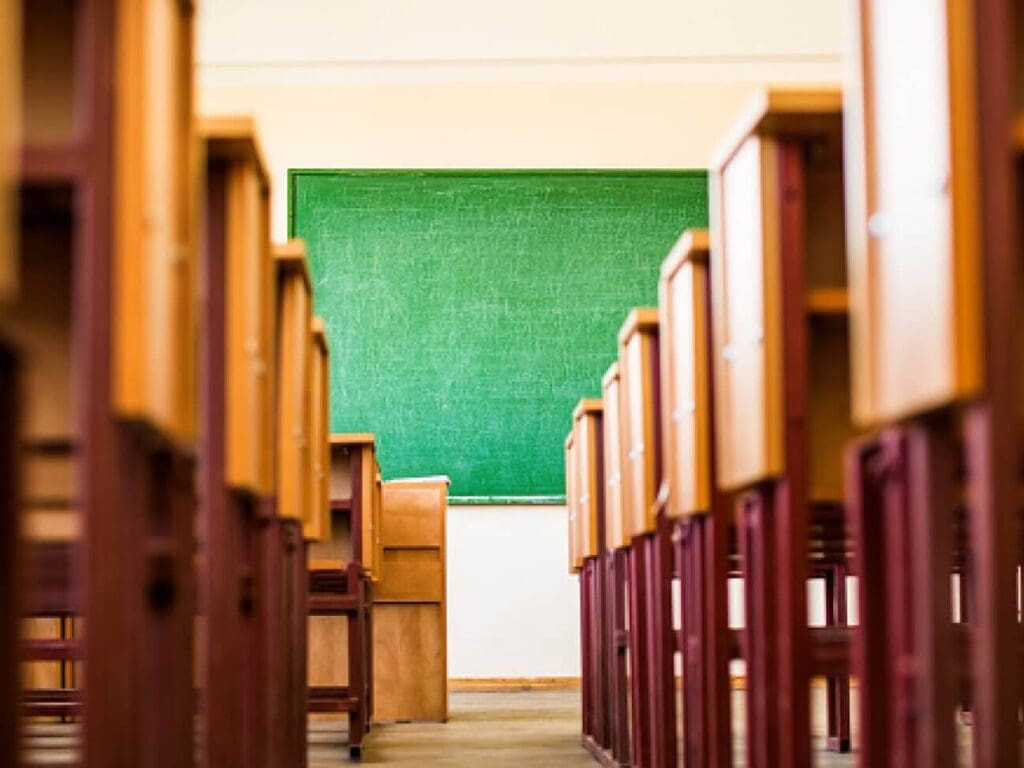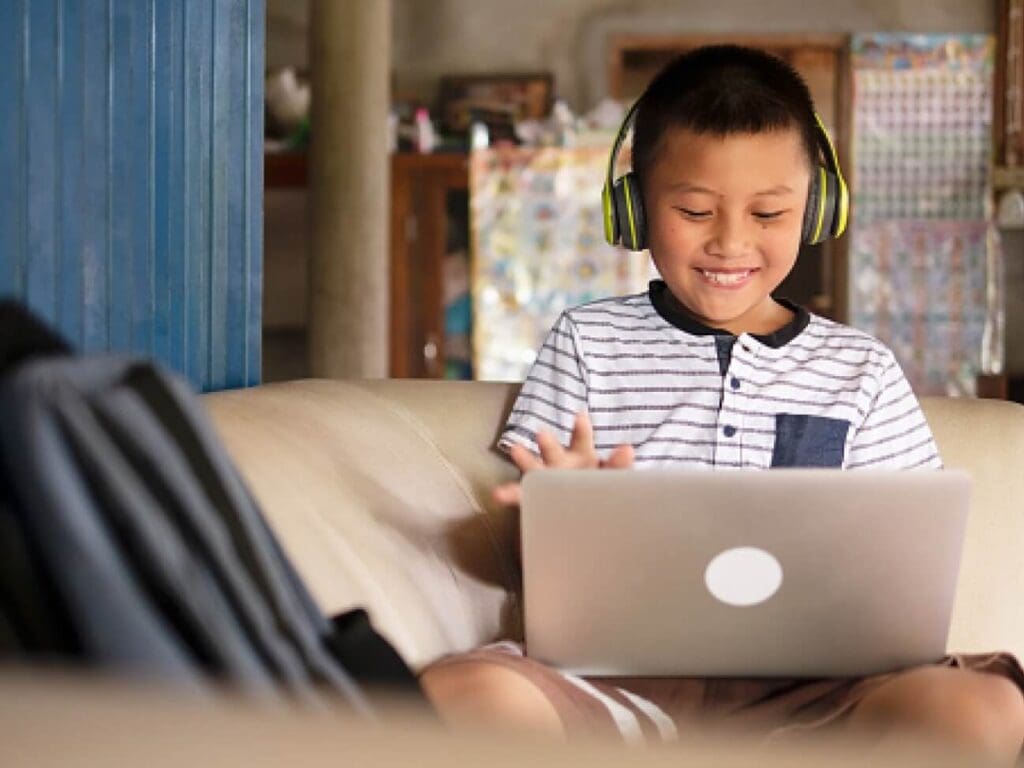Choices in education, just as in life, are a good thing. Giving families the option of whether to choose an online education or a public school education empowers them to make a decision on the learning environment that best fits their needs. And since circumstances can change, as was the case with the COVID pandemic, what is best this year may not be best next year. The ability to exercise educational freedom is critical to ensuring students get the proper instruction that gives them a foundation from which to grow their knowledge from year-to-year.
In this blog, we’ll provide an overview of the traditional in-person public school experience and the experience of attending online school. Both have unique strengths and benefits, but it’s important to know what will best fit the needs of your family’s circumstances.
Understanding the basics of online school

Online schools deliver educational instruction and courses primarily or entirely through the internet, allowing students to participate in learning activities remotely, often at their own pace.
This type of school leverages digital platforms to provide a range of distance learning services and opportunities similar to a traditional school setting such as teaching, assessments, student interaction, and support services.
In terms of what an online school is like, there are different types of online schools such as online charter schools, online private schools, and online public schools. Some are funded by the government and tuition-free, while others may require a tuition payment. A typical school day can vary widely from one school to the next. Online learning routines can vary with students either setting their own schedule and pace or adhering to a predetermined learning timeline.
Online schools often provide programs with a wide range of curriculum options from general education to specialized courses and tracks. This can be especially helpful for students wanting to steer their education toward a specific area of study such as STEM, computer technology, forensics, or a foreign language. When choosing, look for accredited online schools, which are required to meet specific educational standards so families can be assured their student is getting a quality education and the degree or credits earned will be recognized and accepted by other educational institutions.

Socialization in online schools is different than in traditional public schools, but it can still be supportive and rewarding. Interaction can take place through forums, email, chat rooms, and video conferences like Zoom. Teachers are available for support through these tools, providing guidance and feedback and helping students with time-management skills. Students can interact with their peers through those channels as well as through discussion boards. Teachers can encourage additional interaction through group projects or by encouraging participation in extracurricular activities.

Benefits of choosing online schooling
Families can take advantage of virtual learning with these benefits of online school:
- Flexibility in coursework scheduling and learning pace.
- Personalized education with tailored learning experiences.
- Accessibility for students with health issues, disabilities, or those living in remote areas.
- Enhanced focus on technology and digital literacy skills.
- More parental oversight and involvement.
- Personalized support, such as the dedicated Learning Success Coaches at ASU Prep Digital.
- Opportunities for acceleration, such as working ahead of grade level or taking college courses in high school.
Challenges in online schools
Adapting to virtual schooling can also present challenges, including:
- Lack of in-person social interaction.
- Technical difficulties, connectivity issues, etc.
- Lack of self-motivation and discipline to stay on track with assignments.
- Limited hands-on learning for subjects like science or art.
Check out our blog, 7 Habits of Successful Students in Online Schooling for tips on how to help your student adapt to an online learning environment.

Understanding the basics of traditional public schools
Traditional public schooling is primarily state-funded and available to all families at no direct cost to them. The curriculum in public schools is administered by the school district, but is generally standardized at the state and national level. A broad range of subjects like math, science, English, and history are the core foundation of the curriculum, and the aim is to provide a well-rounded education that prepares students for various aspects of adult life after graduation, including employment or higher forms of education.
Most school options are geographically driven, so students attend the school they are zoned for, which is likely the closest elementary school, middle school, or high school to their residence. The school year is generally nine months long and the school day is normally about seven hours long.
The public school setting is a large part of the social fabric of a child’s life. Public schools offer a variety of extracurricular activities such as sports, music, arts, and various special interest clubs that contribute to the development of well-rounded students.

Benefits of traditional public schools
Families often choose traditional public schools for the following benefits:
- Opportunities for students to socialize, collaborate, and develop essential interpersonal skills.
- Hands-on experiences that may be challenging to replicate in a virtual environment, enhancing practical understanding and skill development.
- Real-time feedback from teachers and peers, fostering quicker comprehension and correction of misunderstandings.
- A structured routine and environment that can help students stay organized, focused, and disciplined in their studies.
Challenges in traditional public schools
Enrolling in public school can also present challenges, including:
- Overcrowded classrooms and limited individual attention.
- Fixed schedules and less flexibility in learning.
- Potential challenges in socialization and exposure to bullying.
- Restrictions due to geographical location.
- Emphasis on a one-size-fits-all curriculum and standardized testing.

Making the best choice for your child
Understanding your child’s learning style, as well as their interests and preferences should be taken into consideration when making the decision. There may be other things to consider such as the quality of the facilities, location, quality of teachers, and the success of students as rated by standardized tests.
If you’re considering online education, consider evaluating the quality and accreditation of online school programs. In addition, understanding and evaluating the importance of social interaction and extracurricular activities in child development is also important. If you’re ready to take the next steps, our comprehensive guide will break everything down, step-by-step.
Conclusion
There are benefits and challenges to enrolling in either an online school or a traditional public school. Advancements in technology and society’s embrace of the digital lifestyle make online schooling an attractive option for families that may not have considered that choice in the past.
It’s important to weigh both options carefully and choose wisely regarding which direction you will go based on your student’s and family’s needs. Regardless of which decision you make, maintaining parental involvement in your student’s education is critical as that will help ensure better outcomes.
Elevate your child’s learning journey with K–12 online education
ASU Prep Digital is an accredited online school program serving students in grades K–12. We believe all students can succeed. Our unique teaching model supports students anywhere, anytime with the latest learning technologies and several layers of personalized instruction and coaching.
In addition, our program is a college prep option where online high school and university courses converge preparing students for college acceptance and encourages them to start earning credit toward college majors and careers.
We support districts in Arizona, while serving students and schools around the world. Take the first step toward transforming your educational experience by attending an information session. Discover how ASU Prep Digital can support students’ academic aspirations and set them on a path to success.
Online school vs public school: What’s the best choice for your child? FAQs
What are the main differences between online and public schools?
The main differences between online and public schools are the location of the learner, the ability, or lack thereof, to set the pace of completion, the customization of the curriculum, the amount of face-to-face interaction, and the amount and quality of extracurricular activities like field trips and sports.
Can online schools accommodate different learning styles better than public schools?
The flexibility offered by online schools in terms of pace of completion along with the personalized guidance from administrators make it a smart choice for those whose learning style may not be served best with the traditional one-size-fits-all approach of public schools.
Is online school better for anxiety?
An online school can be a great alternative for students who struggle with anxiety and other issues. The incorporation of online classes can be helpful in bringing students out of their shell and expanding their horizons through education.

